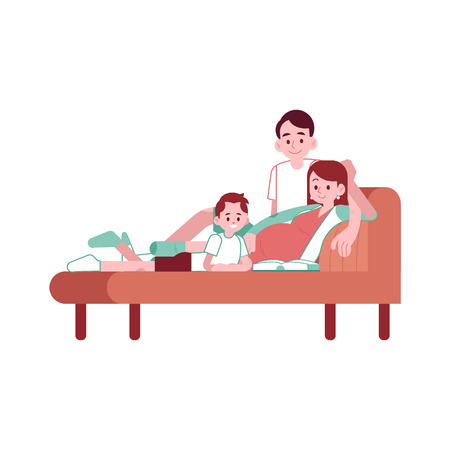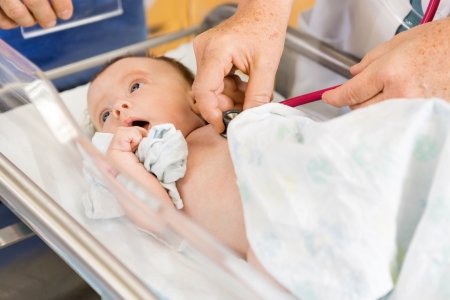1. Understanding the Importance of Hospital Hygiene in India
Maintaining strict hospital hygiene is of utmost importance in India, particularly during disease outbreaks when infection risks are at their highest. Indian hospitals serve a large and diverse population, often with limited resources and heavy patient inflow. This creates unique challenges for healthcare facilities across the country. In urban areas, overcrowded government hospitals see hundreds of patients daily, while rural clinics may lack essential sanitation infrastructure. The high volume of footfall from patients, caregivers, and visitors increases the risk of cross-contamination and spread of infectious diseases such as dengue, tuberculosis, and seasonal flu outbreaks. Additionally, cultural practices like family involvement in patient care and frequent visits can complicate infection control efforts. Thus, implementing rigorous hygiene standards is not just a medical necessity but a social responsibility to protect vulnerable patients, healthcare workers, and communities at large. During outbreaks, even small lapses in hygiene protocols can lead to rapid transmission within hospital settings, making it essential for everyone — from hospital staff to visiting families — to understand and follow proper safety measures tailored for Indias unique healthcare environment.
2. Standard Operating Procedures for Cleaning and Disinfection
Maintaining high standards of cleanliness and disinfection is essential in Indian hospitals, especially during disease outbreaks like COVID-19, dengue, or seasonal flu. The Ministry of Health and Family Welfare (MoHFW) and the National Centre for Disease Control (NCDC) in India have provided comprehensive guidelines that hospitals should follow to ensure safety for patients, staff, and visitors. Adhering to these procedures is crucial not only for infection control but also to maintain trust within the community, as many families rely on hospital care during health crises.
Best Practices for Cleaning Hospital Areas
- Daily Routine Cleaning: All patient-care areas, including wards, waiting rooms, toilets, and corridors must be cleaned at least twice a day using soap/detergent followed by appropriate disinfectant.
- High-Touch Surfaces: Frequently touched surfaces such as door handles, bed rails, switches, lift buttons, and nursing stations should be cleaned every 2-4 hours with a recommended disinfectant.
- Dedicated Cleaning Staff: Allocate specific staff for each area to prevent cross-contamination. Ensure all cleaners wear gloves, masks, and aprons as per Indian hospital safety norms.
- Proper Disposal: Use colour-coded bins (as per Biomedical Waste Management Rules) for disposal of waste. Segregation at source helps prevent infections.
Recommended Disinfectants for Indian Hospitals
| Disinfectant | Concentration | Suitable Areas | Availability in India |
|---|---|---|---|
| Sodium Hypochlorite | 0.5% solution | Floors, surfaces, toilets | Easily available; commonly used in public hospitals |
| 70% Isopropyl Alcohol | Ready-to-use | Equipment, small surfaces | Widely used; quick drying |
| Phenolic Compounds | As per manufacturer’s instructions | Laundry, general cleaning | Culturally familiar; cost-effective option for many Indian settings |
| Benzalkonium Chloride (QACs) | 0.1%-0.2% | Nursing stations, telephones, trolleys | Increasingly adopted in urban hospitals |
Steps for Effective Cleaning & Disinfection (Adapted to Local Contexts)
- Prepare cleaning solution: Always mix fresh disinfectant solutions daily as per label instructions. In rural areas where ready-made solutions are scarce, use household bleach diluted with water.
- Systematic workflow: Start from the least soiled to the most soiled areas to avoid spreading contamination.
- PPE usage: Ensure all cleaning staff wear gloves and masks. In Indian climate conditions, provide regular breaks and hydration to staff working in PPE.
- Adequate ventilation: Open windows wherever possible to reduce airborne transmission risks—particularly important in Indian hospitals without central air-conditioning.
- Cultural considerations: Use signage in local languages (Hindi, Tamil, Bengali etc.) to inform about cleaning schedules and restricted areas during disinfection.
The Role of Families & Visitors in Maintaining Hygiene Standards
Apart from hospital staff efforts, families visiting patients should adhere strictly to hygiene protocols: using hand sanitisers at entry points and following mask mandates. This community approach strengthens overall infection control—a value deeply rooted in Indian family culture.

3. Personal Protective Equipment (PPE): Access and Appropriate Usage
Personal Protective Equipment (PPE) plays a pivotal role in safeguarding the health of doctors, nurses, and support staff during disease outbreaks in Indian hospitals. Types of PPE recommended for Indian healthcare workers include surgical masks, N95 respirators, gloves, gowns or coveralls, face shields, goggles, and shoe covers. Each item is designed to protect against different modes of infection transmission, such as airborne droplets or contact with contaminated surfaces.
Practical Tips on Reusing PPE
Given the frequent shortages of PPE in many parts of India, especially in rural and government hospitals, it becomes essential to adopt practical strategies for reuse wherever appropriate. For example, N95 masks can be reused by individual healthcare workers if they are properly stored in breathable paper bags and allowed to dry out between uses. Face shields and goggles can be disinfected using alcohol-based wipes or soap and water after each shift. However, single-use items like gloves and surgical masks should not be reused under any circumstances.
Challenges in Supply and Training
The Indian healthcare system faces unique challenges regarding the continuous supply of quality PPE. Factors such as high patient loads, import dependency for specific equipment, and budget constraints can lead to critical shortages. Moreover, training frontline workers—especially those in smaller towns or primary health centres—on the correct donning (putting on) and doffing (removing) procedures is often overlooked. Regular refresher sessions, easy-to-understand visual guides in local languages like Hindi or Tamil, and mentorship from senior staff members are crucial steps towards improving safety standards.
Empowering Healthcare Workers
Ultimately, ensuring access to proper PPE and equipping staff with hands-on knowledge is not just about compliance—it’s about showing respect for the people who care for our families. Hospitals must work closely with suppliers, government agencies, and community leaders to prioritise PPE distribution during outbreaks. Family members can also support by spreading awareness about the importance of hospital hygiene practices within their circles. Together, we can create safer healing environments for all Indians during times of crisis.
4. Managing Patient Flow and Family Visits
In India, family involvement in patient care is deeply rooted in our cultural fabric. Families provide not only emotional support but often assist with daily care tasks, making their presence vital for many patients. However, during disease outbreaks, increased footfall in hospitals can elevate infection risks. Therefore, it becomes crucial to balance the need for familial participation with robust safety protocols. The following table outlines common Indian customs related to family visits and culturally sensitive measures that hospitals can implement to control infections while respecting these traditions:
Indian Custom/Practice |
Culturally Sensitive Safety Protocol |
|---|---|
| Multiple family members visiting at once | Limit visitors to one or two key family members per patient; offer video calling facilities for other relatives |
| Family members assisting with feeding or basic care | Train designated family caregivers in proper hand hygiene and personal protective equipment (PPE) usage before entry |
| Bringing home-cooked food for patients | Designate safe drop-off points for outside food; ensure all containers are sanitized before reaching patients |
| Performing religious rituals or prayers at the bedside | Encourage virtual participation in rituals when possible; allow small, timed prayer sessions adhering to hospital guidelines |
| Staying overnight with the patient | Provide clearly marked family waiting areas with limited capacity and frequent cleaning; ensure proper distancing and ventilation |
The Role of Hospital Staff in Supporting Families
Hospital staff play a key role in explaining the reasons behind new protocols and reassuring families that these measures protect both patients and their loved ones. Culturally competent communication—using local languages and respecting elders—can improve compliance and trust.
Empowering Families Through Education
Conduct short training sessions or distribute pamphlets in regional languages about infection control practices tailored for family caregivers. This empowers families to contribute positively to patient recovery while minimizing risks.
Conclusion: Balancing Care with Caution
By acknowledging Indian customs and implementing practical, culturally sensitive protocols, hospitals can maintain essential hygiene standards during outbreaks without alienating families. Together, we can create safer healing environments that honor both medical best practices and cherished traditions.
5. Waste Disposal and Environmental Control in Indian Hospitals
Safe Biomedical Waste Disposal: Meeting the Indian Challenge
India’s hospitals face the dual challenge of managing biomedical waste safely while handling a high volume of patients, especially during disease outbreaks. Effective biomedical waste management is not just a regulatory necessity but a critical step in preventing the spread of infections to healthcare workers, patients, and their families. Proper segregation at source is essential — using colour-coded bins for infectious, non-infectious, and sharps waste as per the Biomedical Waste Management Rules in India. Training staff regularly on these protocols ensures compliance even in busy settings.
Practical Solutions for Limited Infrastructure
Many Indian hospitals, particularly in rural areas, struggle with limited infrastructure for waste treatment and disposal. In such cases, partnerships with authorised Common Biomedical Waste Treatment Facilities (CBMWTFs) are vital. If incinerators or autoclaves are available onsite, regular maintenance and strict monitoring must be ensured. Family members visiting patients should also be educated about not disposing personal items like masks or tissues carelessly within hospital premises to prevent cross-contamination.
Pest Control: Keeping Hospitals Safe and Clean
Pest control is another crucial aspect of environmental safety in Indian hospitals. Overcrowding and improper waste disposal can attract rodents, insects, and stray animals, increasing the risk of disease transmission. Routine pest control measures such as regular cleaning schedules, sealing entry points, and safe use of approved pesticides help maintain a hygienic environment. Hospitals must also have clear guidelines for food storage and disposal within wards to minimize pest attraction.
Community Involvement: A Father’s Perspective
As a parent accompanying family members to hospitals, I believe that community involvement plays a big role in supporting hospital hygiene efforts. Encouraging relatives to follow signage about waste segregation, respecting hospital rules, and reporting any lapses in cleanliness can make a positive difference. Simple actions like these go a long way towards supporting overworked hospital staff and keeping everyone safe during outbreaks.
6. Education and Communication for Hospital Staff and Visitors
The Importance of Multilingual Training and Awareness
India is a land of diverse languages and cultures, which makes effective communication in hospitals both challenging and crucial, especially during disease outbreaks. To ensure that hospital hygiene and safety protocols are followed by everyone, it is essential to provide education and training in multiple Indian languages such as Hindi, Tamil, Bengali, Telugu, Kannada, Malayalam, Marathi, Punjabi, and Urdu. This approach enables both staff and visitors from different linguistic backgrounds to understand the importance of hand hygiene, mask-wearing, physical distancing, and other safety measures.
Case Studies from Indian Hospitals
Several leading hospitals in India have already set examples by running multilingual awareness campaigns. For instance, Apollo Hospitals in Chennai regularly uses posters, digital displays, and audio announcements in English, Tamil, and Hindi to inform visitors about handwashing stations and mask protocols. Similarly, AIIMS Delhi conducts staff training workshops in Hindi and regional languages to ensure that every team member—from doctors to housekeeping staff—understands infection control procedures clearly.
Engaging Families and Visitors through Local Language Communication
Since family participation is a cornerstone of patient care in India, hospitals are increasingly involving relatives in safety briefings conducted in local languages. For example, during the COVID-19 pandemic, many facilities provided pamphlets and video instructions on PPE usage and visiting hours in the mother tongues of patients’ families. This step not only reduces confusion but also empowers families to act responsibly within hospital premises.
Continuous Reinforcement through Simple Messaging
To maintain high levels of hygiene compliance, regular reminders using simple language are important. Hospitals often use WhatsApp groups or SMS alerts to send quick tips on hand sanitisation or symptom reporting directly to staff phones in their preferred language. Visual aids like infographics depicting the Namaste greeting instead of handshakes have also become popular as culturally relevant reminders.
Conclusion: The Way Forward
In summary, multilingual information campaigns and ongoing training are key to reinforcing essential hospital hygiene and safety measures in India. By respecting linguistic diversity and using familiar terms and examples, hospitals can achieve better cooperation from both staff and visitors—making healthcare settings safer for everyone during disease outbreaks.
7. Community and Government Support for Hospital Safety
During disease outbreaks in India, the involvement of local communities and robust government schemes play a vital role in ensuring hospital hygiene and safety. One prominent example is the Swachh Bharat Abhiyan, a nationwide campaign aimed at promoting cleanliness and sanitation across public spaces, including healthcare facilities. When communities actively participate in maintaining clean surroundings, they not only reduce the risk of infections but also support hospital staff in their efforts to provide safe medical care.
The Role of Local Communities
Community engagement is essential for spreading awareness about the importance of personal hygiene, proper waste disposal, and adherence to infection control practices. Families can contribute by following guidelines regarding visitation policies, practicing hand hygiene before entering hospital premises, and cooperating with hospital authorities during screening procedures. By fostering a sense of shared responsibility, communities can help prevent the spread of diseases within hospitals and their neighbourhoods.
Government Schemes and Initiatives
Government schemes such as Swachh Bharat Abhiyan have significantly improved sanitation standards in both urban and rural areas. Hospitals benefit from regular cleaning drives, upgraded waste management systems, and access to resources for training healthcare workers in best practices. The government also supports hospitals by providing funding for infrastructural improvements and conducting health awareness campaigns tailored to local needs.
Together Towards Safer Hospitals
For India’s hospitals to remain safe during outbreaks, it is crucial that both community members and government agencies continue to work hand-in-hand. Parents can set examples for their children by participating in cleanliness drives or volunteering at local health centres. By supporting initiatives like Swachh Bharat Abhiyan and staying informed about hospital safety protocols, every family becomes an important ally in the fight against infectious diseases.


